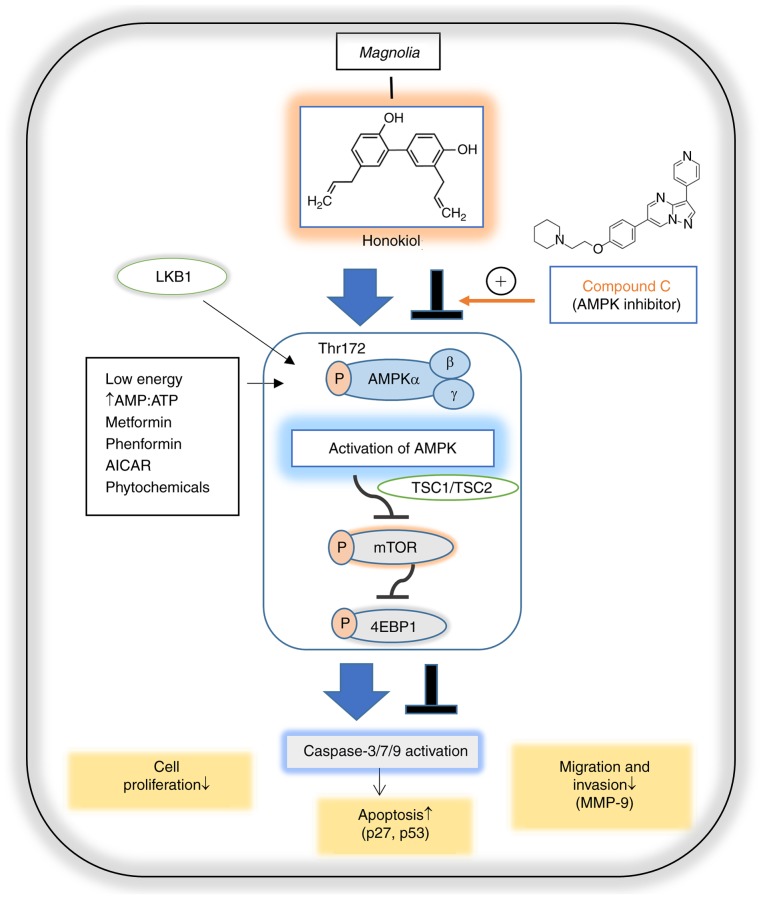Figure 5.
Schematic representation of AMPK-dependent anticancer activities of honokiol in ovarian cancer cells. AMPK is activated in response to cellular energy stress by sensing increasing AMP/ATP ratio, leading to the activation of LKB1. Metformin, phenformin, AICAR and phytochemicals may also mimic stressors and lead to AMPK activation in an LKB1-dependent manner. A specific AMPK pathway involves the TSC1/TSC2 complex, leading to the downregulation of mTOR, which regulates apoptosis, cell growth, migration and invasion. The mTOR pathway inhibits apoptosis via the regulation of the tumor suppressors p27 and p53. The mTOR/4EBP1 pathway regulates cell migration by regulating MMP-9. Honokiol activates AMPK, which inhibits mTOR/4EBP1 signaling, leading to anti-proliferative effects and apoptosis in ovarian cancer cells. Honokiol also inhibits migration and invasion via AMPK activation. The AMPK inhibitor compound C reverses honokiol-regulated proliferation, apoptosis, migration and invasion. Blue arrows indicate activation, T-bars indicate downregulation. AMP, adenosine 5′-phosphate; ATP, adenosine 5′-triphosphate; AMPK, AMP-activated protein kinase; LKB1, liver kinase B1; AICAR, 5-aminoimidazole-4-carbox-amide ribonucleotide; TSC1, tuberous sclerosis 1 protein; TSC2, tuberous sclerosis 2 protein; mTOR, mammalian target of rapamycin; 4EBP1, eukaryotic translation initiation factor 4E-binding protein 1; MMP-9, matrix metalloproteinase-9; p27, cyclin-dependent kinase inhibitor 1B; p53, tumor protein p53.

